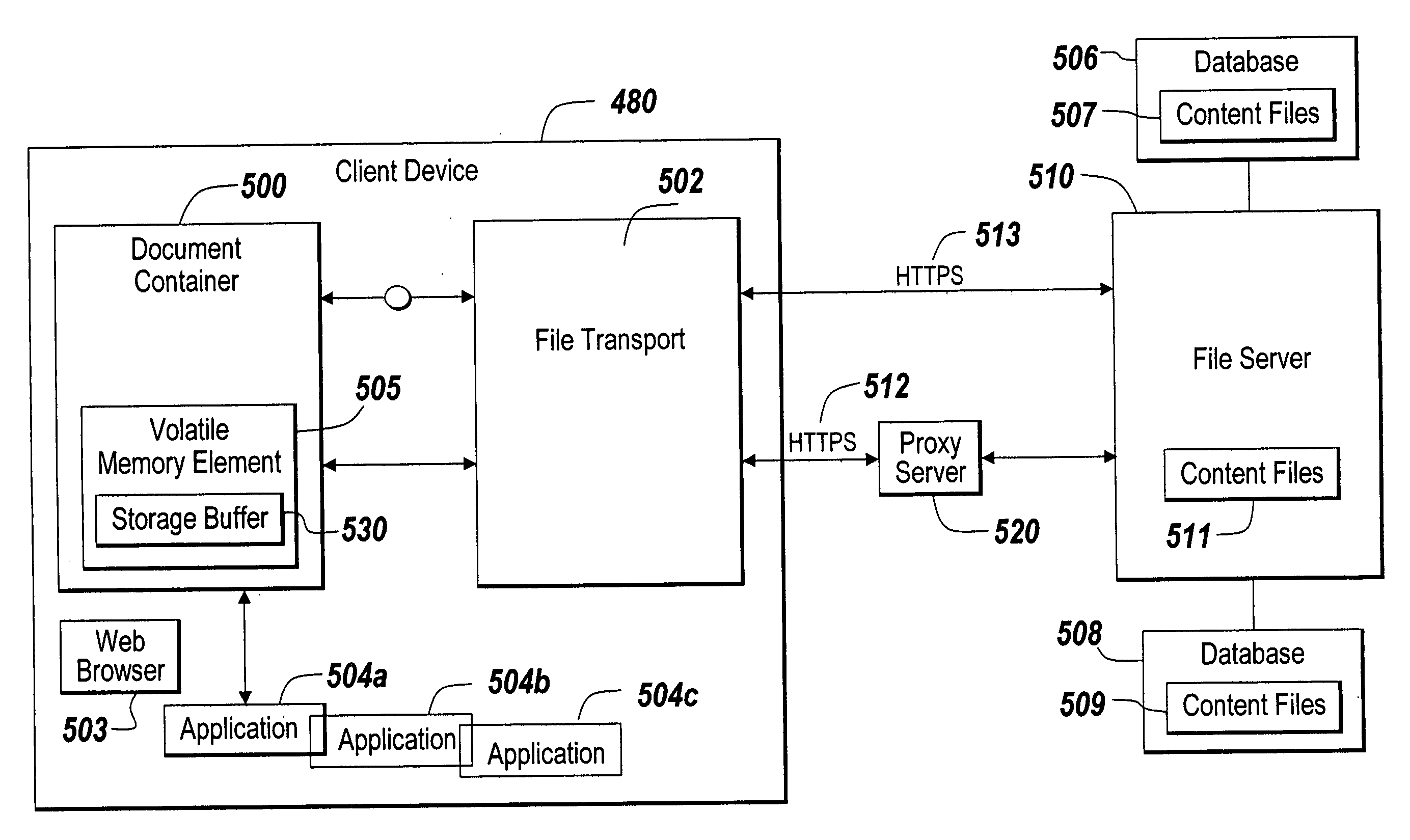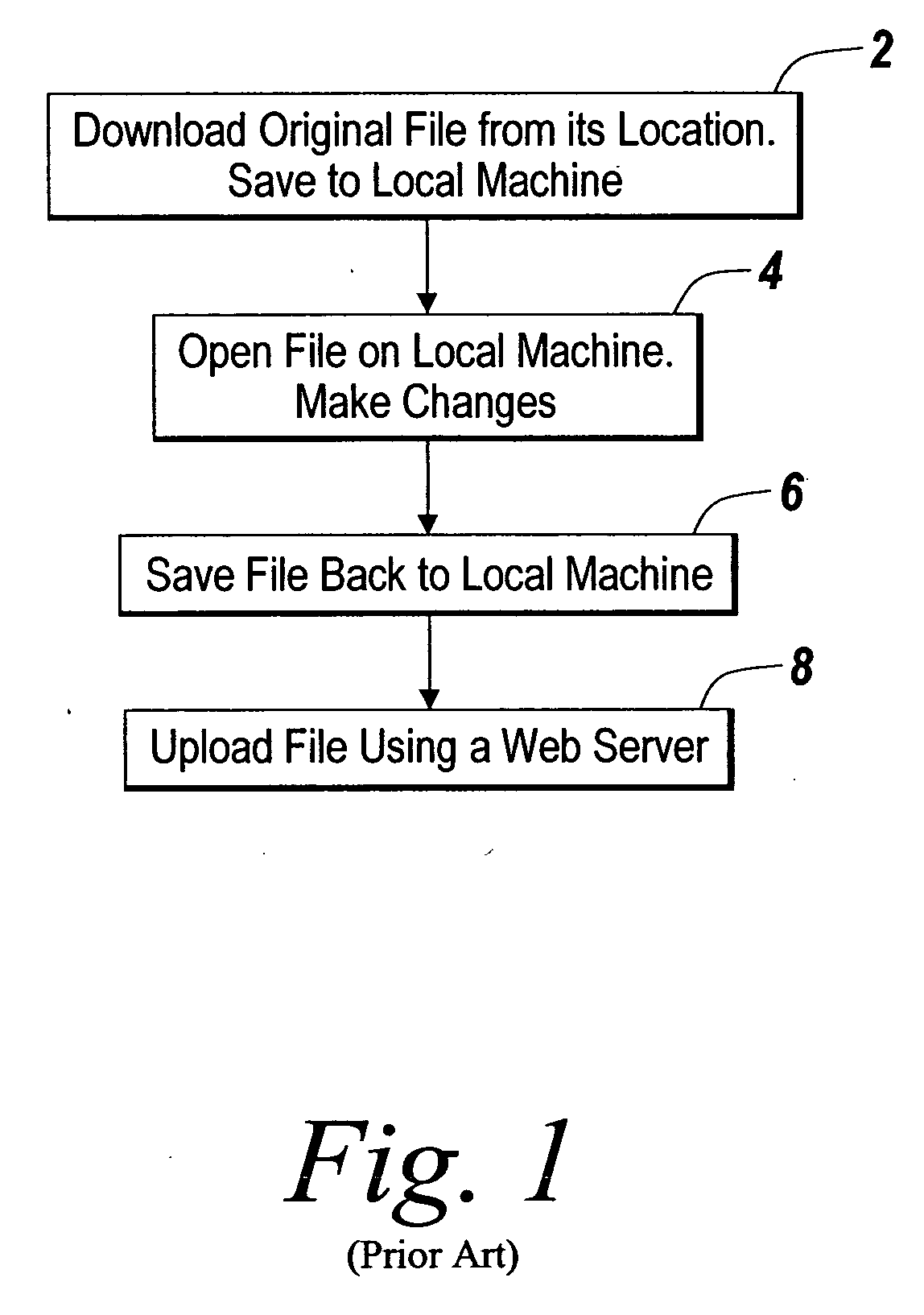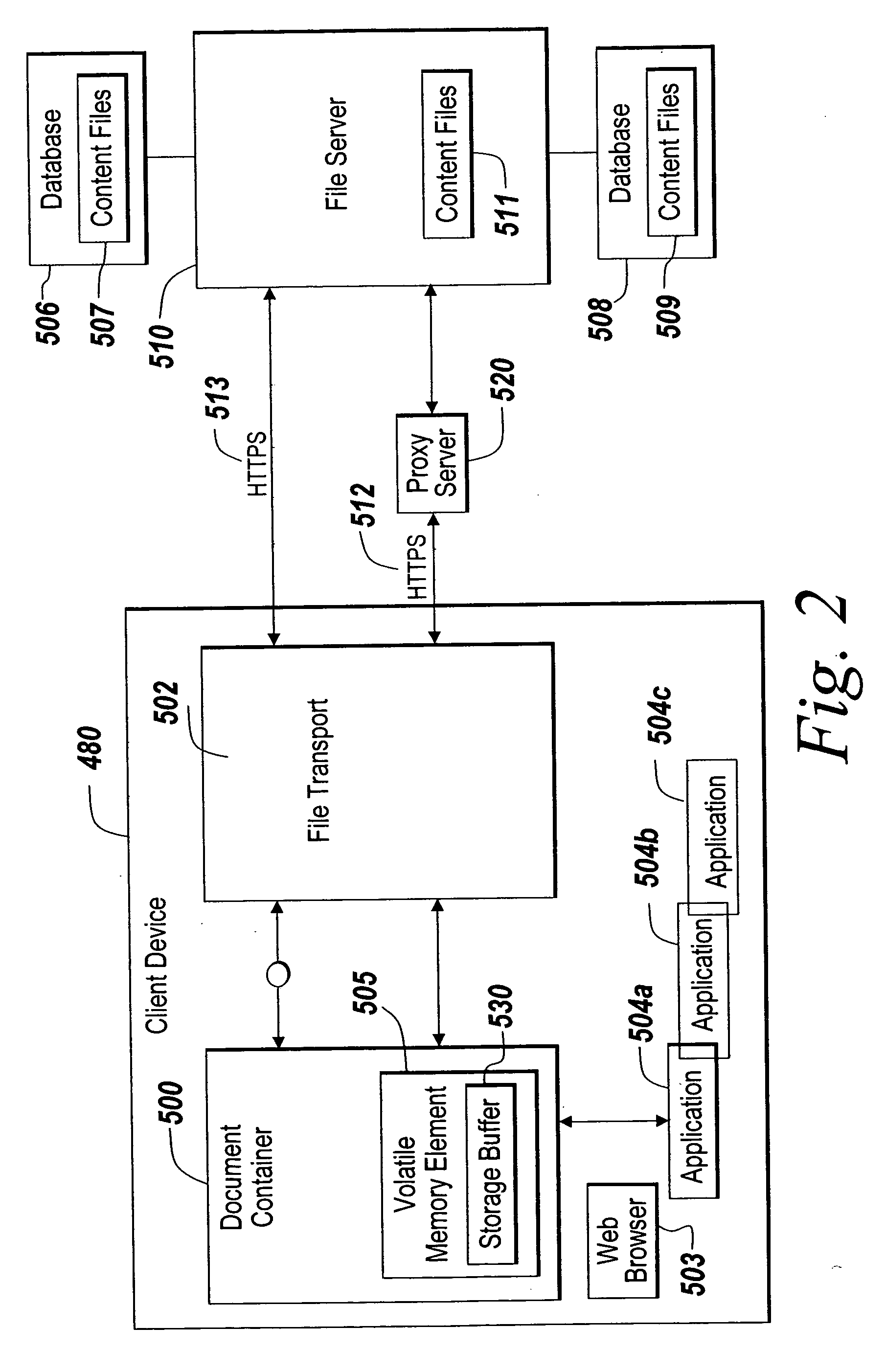Methods and apparatus for secure online access on a client device
a client device and secure technology, applied in the field of secure accessing content files from a server, can solve the problems of lessening the security risk of unauthorized viewing, editing or acquisition of server-originated content, and achieve the effect of limiting the manipulation of content and preventing unwanted disclosure of confidential information
- Summary
- Abstract
- Description
- Claims
- Application Information
AI Technical Summary
Benefits of technology
Problems solved by technology
Method used
Image
Examples
Embodiment Construction
[0019] The illustrative embodiment of the present invention allows the distribution of content files from a server to a client for viewing or editing locally that controls the ability of a user at the client to edit and save the content locally. By bypassing non-volatile memory on the client device in favor of volatile memory assigned to an instantiated document container object, the risk of extra copies of the content being saved on the client device is greatly lessened. Additionally, the ability to perform menu substitution for the client-side applications executing within the instantiated document container allows control over the editing process. To increase security, the content distribution system can also employ a filtering process at a proxy server to apply a rules-based filter to content requests prior to delivering the content to the document container on the client device.
[0020] The illustrative embodiment of the present invention is applicable to a distributed networkin...
PUM
 Login to View More
Login to View More Abstract
Description
Claims
Application Information
 Login to View More
Login to View More - R&D
- Intellectual Property
- Life Sciences
- Materials
- Tech Scout
- Unparalleled Data Quality
- Higher Quality Content
- 60% Fewer Hallucinations
Browse by: Latest US Patents, China's latest patents, Technical Efficacy Thesaurus, Application Domain, Technology Topic, Popular Technical Reports.
© 2025 PatSnap. All rights reserved.Legal|Privacy policy|Modern Slavery Act Transparency Statement|Sitemap|About US| Contact US: help@patsnap.com



